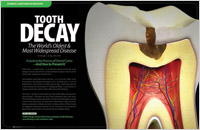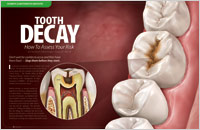What is Air Abrasion?
Air abrasion is a new micro-dentistry technique that is used to treat tooth decay and prepare teeth for restorations. Traditionally, dentists used noisy dental drills to remove decay and prepare the teeth for fillings, but air abrasion has proven to be a noiseless, heatless, minimally invasive alternative. Air abrasion is similar to sandblasting, in that tiny particles are propelled toward small areas of decay to remove them. A filling is then applied to seal the tooth from further harm.
An anesthetic is not usually required for this procedure, which means the dentist can treat multiple teeth in a single appointment. The goal of air abrasion is to pinpoint and remove early areas of decay, while preserving more of the natural tooth. The combination of air abrasion and composite resin fillings quickly and comfortably restores functionality and strength to the teeth.
Here are some of the main advantages associated with air abrasion:
-
More of the natural tooth is left untouched.
-
No need for anesthesia in most cases.
-
No vibrations, horrible noises or excessive pressure.
-
Quicker, easier procedures.
-
Reduced risk of further damage to the teeth (chipping and fractures).
-
Teeth are left dry, which is advantageous for filling placement.
Related Tooth Decay Articles
 What is Tooth Decay? – And How to Prevent It!
What is Tooth Decay? – And How to Prevent It!
Tooth Decay is an infection, and many people don't realize that it is preventable. This article is the first in a series about tooth decay, perhaps the number one reason children and adults lose teeth during their lifetime. Explore the causes of tooth decay, its prevention and the relationship to bacteria, sugars and acids... Read Article
 Tooth Decay – How To Assess Your Risk
Tooth Decay – How To Assess Your Risk
Don't wait for cavities to occur and then have them fixed — stop them before they start. Modern dentistry is moving towards an approach to managing tooth decay that is evidence-based — on years of accumulated, systematic, and valid scientific research. This article discusses what you need to know to assess your risk and change the conditions that lead to decay... Read Article
Back